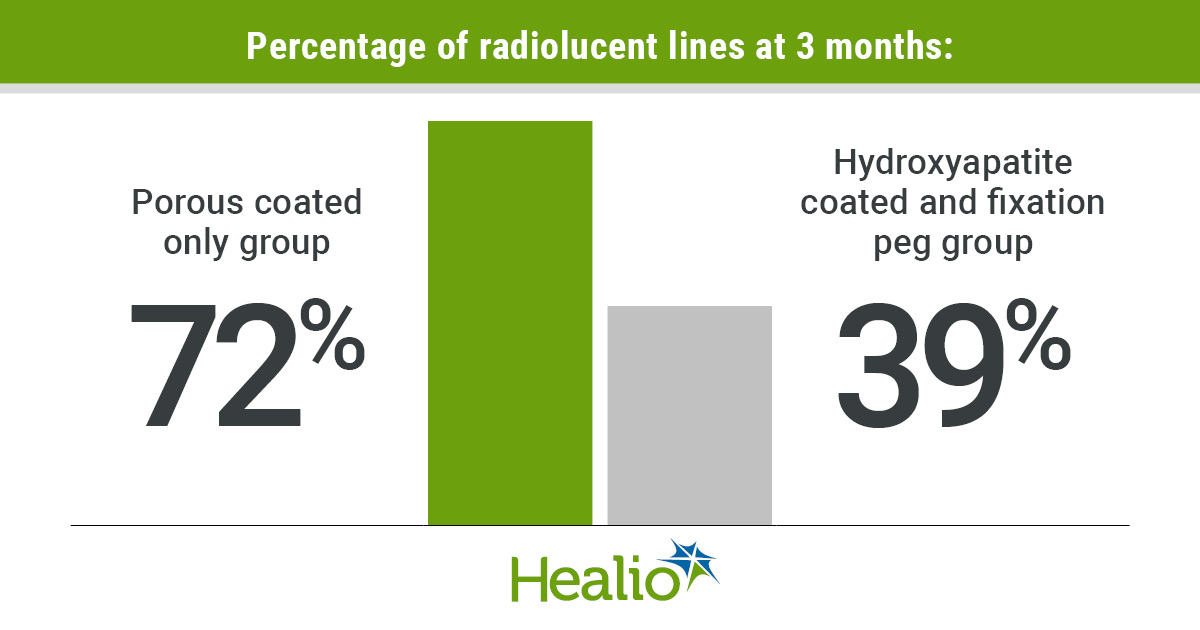TKA implants with vs without hydroxyapatite coating, fixation pegs yielded similar outcomes
Total knee arthroplasty implants with porous and hydroxyapatite coatings and fixation pegs had similar clinical outcomes and survivorship rates compared with knee implants with a porous coating only, according to published results.
Researchers randomly assigned 197 patients undergoing primary TKA to receive either an implant with porous coating only (LCS Complete Porocoat, DePuy Synthes) or an implant with porous coating plus hydroxyapatite coating and four fixation pegs (LCS Complete Duofix, DePuy Synthes). Researchers compared postoperative pain, radiographic evidence of biological fixation and clinical outcomes between the two groups. Patients completed Oxford Knee Score, American Knee Society Score, SF-12 and VAS pain scores at 3, 6, 12, 60 and 120 months postoperatively, and researchers collected postoperative anteroposterior and lateral calibrated radiographs.
Results showed no significant differences in VAS pain scores and VAS pain score change from preoperative baseline between the two groups, with marked improvements in both groups in pain from preoperative baseline. Researchers also found no significant differences in the American Knee Society Score. Although researchers noted a statistically significant difference in favor of the porous coating group-only with SF-12 physical component and a trend toward a statistically significant difference in favor of the added hydroxyapatite coating and fixation peg group with the Oxford Knee Score, the findings did not reach minimal clinically important difference.

At 10-year follow-up, 63% of patients in the porous coating-only group had radiolucent lines vs. 35% of patients in the added hydroxyapatite coating and four-peg group, according to results. Researchers noted no correlation between radiolucent lines and pain, as well as no instances of loosening or osteolysis in either group. Revision for infection occurred in one patient in the porous coating-only group, results showed. – by Casey Tingle
Disclosures: Hegarty reports no relevant financial disclosures. Please see the study for all other authors’ relevant financial disclosures.

